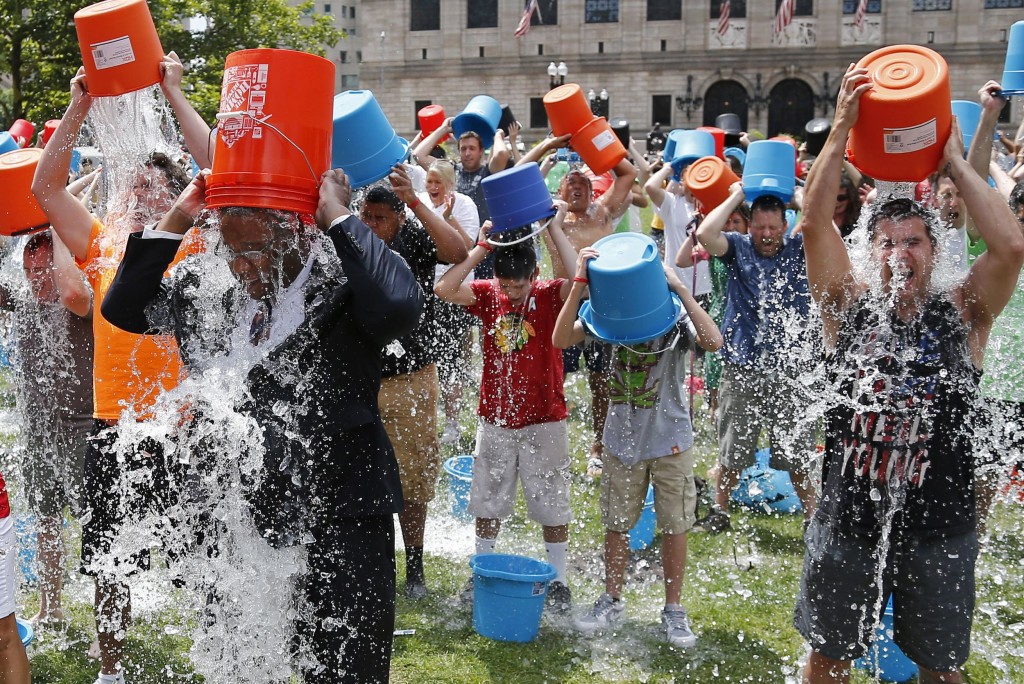
By Caroline Bello, Features Editor
What began as a comical challenge of athletes and celebrities pouring ice water over their heads has now turned into a philanthropic nationwide trend. The ALS ice bucket challenge is ubiquitous on virtually all social media outlets including Instagram, Facebook, and Twitter feeds. Each video challenge features a nominee pouring a bucket of ice water on their heads for the awareness of ALS.
The rules of this challenge are simple: if you are nominated, you have 24 hours to post a video of you pouring ice water on your head. The video must include the nominee mentioning who they are donating to (ALS), who nominated them, and who they will nominate next. If the challenge is not completed and uploaded in 24 hours, then they must donate $100 to the ALS association. This rapidly popular trend has not only garnered millions of dollars towards the association, but also the awareness it’s been seeking for some time.
ALS, or amyotrophic lateral sclerosis, is a neurodegenerative disease that affects nerve cells in the brain and spinal cord. The progressive degeneration of vital motor neurons causes the body to no longer send impulses to muscles; over a period of time this eventually leads to the patients’ demise. Adults between the ages of 40 and 70 are most susceptible to this tragic disease.
The ice bucket challenge originated from athletes pouring ice water on their heads and challenging other athletes to do the same—or donate to a charity of choice. Former Boston College baseball player Pete Frates was diagnosed with ALS in 2011, and he challenged friends and celebrities (Tom Brady and Matthew Ryan) to do the challenge through a social media post. This nomination inspired the challenge and got it circulating on social networks.
Before the ice bucket challenge, ALS was not widely known (especially among adolescents), however through the help of various athletes and the effective execution of social media, it has made itself prominent in the minds of everyone. Because of its specific rule of nominating a minimum of three people, the trend ensures circulation and can quickly become exposed to a wide array of people. Also, since it must be uploaded on a social media site, followers and friends who were not nominated view it and are immediately informed in a contemporary, simple way. Nominees have been inspired to donate even after completing the challenge along with those of which were nominated but failed to complete. These short videos on Instagram and Facebook have gleaned $100 million in just weeks of constant nominations and donations.
The social media factor has been the most crucial ingredient to this campaign and without it ALS would not have been so widely recognized. This unusual fundraiser has been able to capture awareness through a simple procedure that has resulted in millions of dollars and counting. Despite the assumption that some nominees do not donate or are focused on the activity instead of the value, awareness is the overall goal. With awareness, comes interest, which has resulted in the conspicuous positive repercussions.

